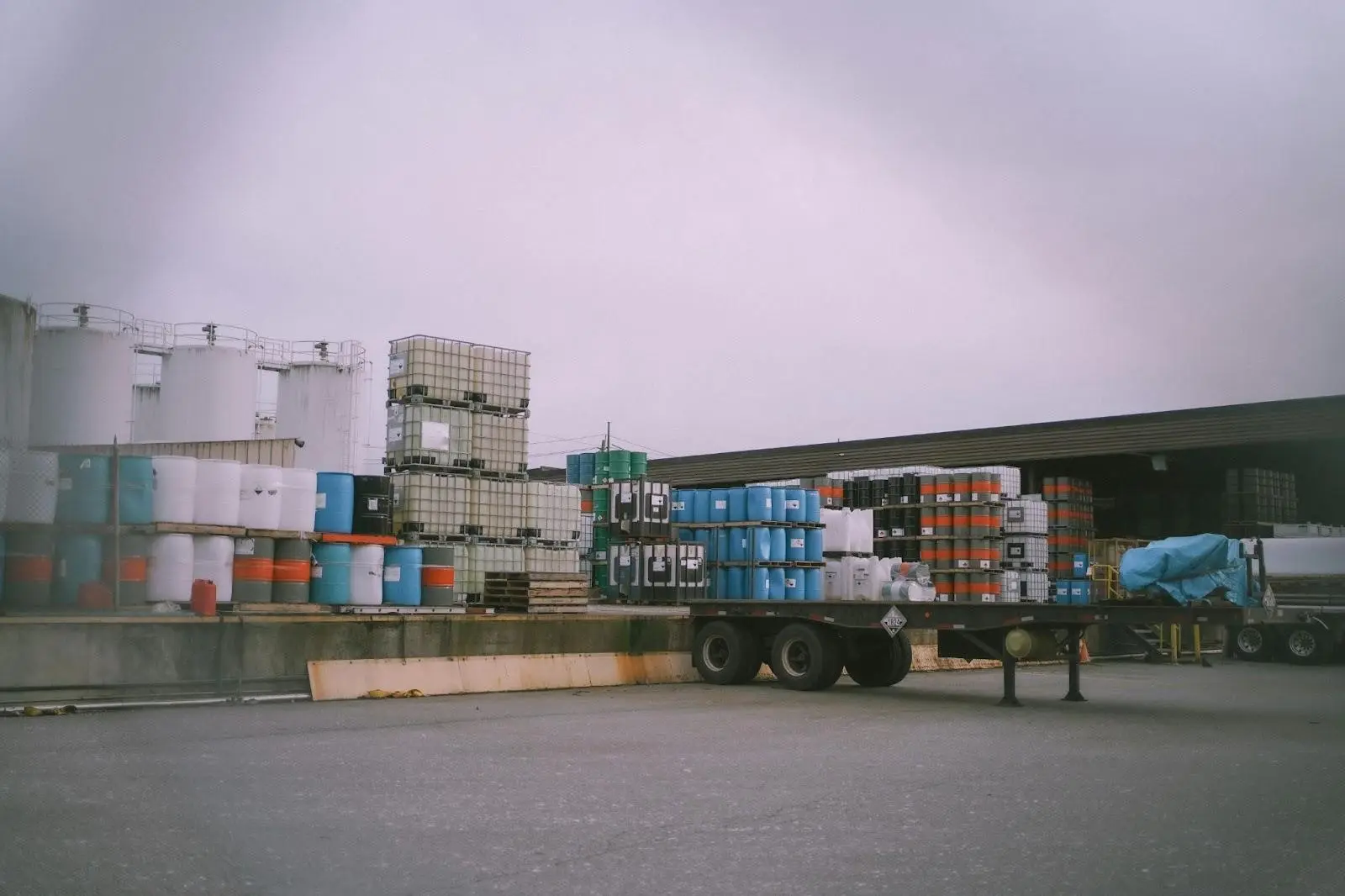Exploring the Future of Last Mile Delivery Trends: Challenges and Innovations

Wondering about the future of last-mile delivery trends? This article explores key innovations and trends that will redefine how packages are delivered, enhancing efficiency and customer satisfaction.
Data-Driven Delivery
Data is the new oil, and in the realm of last-mile delivery, it’s fueling efficiency and innovation. Harnessing data collection and analysis allows businesses to significantly reduce operational costs, optimize inventory, and enhance the final delivery experience. Imagine knowing exactly when a package will arrive or being able to reroute deliveries in real-time to avoid traffic jams. This is not the future; it’s the present reality for companies investing in data analytics.
Approximately 50% of companies involved in delivery activities are expected to invest in data collection and analytics by 2025. This investment is not just about collecting data; it’s about integrating real-time tracking with business applications to streamline operations and reduce errors. For global trade, this also means smoother logistics across borders, such as more efficient Singapore to China shipping routes that save time and reduce costs.
The dynamics of delivering goods are changing, and data is at the heart of this transformation, offering businesses a vital competitive edge in an increasingly demanding market, a shift that reflects the history of logistics.
Real-Time Tracking Systems
In an era where instant gratification is the norm, real-time tracking systems have become a staple in last-mile delivery. A staggering 65% of buyers want to track their parcels online, reflecting the growing demand for transparency and timely updates. Real-time tracking doesn’t just satisfy customer curiosity; it significantly reduces customer anxiety by providing consistent updates, thereby enhancing trust.
Companies that implement online tracking systems have seen logistics costs drop by up to 20%. These systems offer several benefits:
- Help identify potential delays early, allowing businesses to manage customer expectations effectively.
- Integrate automated systems and software to ensure customers receive timely updates without needing to contact support.
- Boost overall customer satisfaction.
In the competitive world of deliveries, real-time visibility can be the key differentiator that sets a company apart in terms of quality.
Eco-Friendly Delivery Methods

Real-Time Tracking Systems
In an era where instant gratification is the norm, real-time tracking systems have become a staple in last-mile delivery. A staggering 65% of buyers want to track their parcels online, reflecting the growing demand for transparency and timely updates. Real-time tracking doesn’t just satisfy customer curiosity; it significantly reduces customer anxiety by providing consistent updates, thereby enhancing trust.
Companies that implement online tracking systems have seen logistics costs drop by up to 20%. These systems offer several benefits:
- Help identify potential delays early, allowing businesses to manage customer expectations effectively.
- Integrate automated systems and software to ensure customers receive timely updates without needing to contact support.
- Boost overall customer satisfaction.
In the competitive world of deliveries, real-time visibility can be the key differentiator that sets a company apart in terms of quality.
Eco-Friendly Delivery Methods
As environmental concerns mount, consumers are increasingly prioritizing sustainability in their purchasing decisions. A remarkable 89% of respondents want environmentally safe delivery methods, and 69% have chosen companies based on their environmental friendliness. For businesses, adopting green shipping practices not only meets consumer demand but also fosters loyalty among environmentally conscious customers.
Eco-friendly delivery methods extend beyond just using electric vehicles. Sustainable packaging materials can significantly decrease overall waste and environmental impact. E-bikes and electric cargo bikes are gaining popularity for urban last-mile deliveries, aiming to reduce congestion and emissions.
Automation and Autonomous Vehicles
Automation is revolutionizing last-mile delivery, with autonomous vehicles leading the charge. These vehicles can operate continuously, providing 24/7 service without the need for human drivers, thus significantly reducing delivery times and costs. The implementation of autonomous delivery can lead to a reduction in delivery costs by up to 40%, thanks to improved fuel efficiency and decreased labor needs.
The global market for autonomous last-mile delivery is projected to expand at a compound annual growth rate of 24.4% from 2023 to 2030. Companies making significant advancements include:
- Amazon, with Prime Air drones, is aiming for a maximum delivery wait time of 30 minutes for lightweight items.
- UPS with its ‘ORION’ route optimization system, which has significantly reduced fuel consumption and delivery costs.
- Starship Technologies with autonomous delivery robots capable of transporting various items directly to consumers.
However, the road to widespread adoption is not without hurdles. Regulatory issues and the need for appropriate infrastructure, such as dedicated lanes, pose significant challenges. Yet, urban congestion is driving the adoption of autonomous delivery robots, which can navigate crowded streets to make short-distance deliveries effectively.
The expected value of the autonomous delivery market by 2030 is a staggering $4.2 billion. The integration of AI in these vehicles enables real-time route optimization, making adjustments to traffic conditions, and ensuring efficient deliveries.
Diverse Delivery Options
Today’s consumers crave variety and flexibility in their delivery options. Around 70% of customers desire different delivery options to meet their immediate needs. Retailers are responding by adopting personalized approaches and scheduled deliveries to enhance customer loyalty.
Companies like Ninja Van provide same-day and express delivery options with a user-friendly management platform. Momo and Hawkr have enhanced their delivery services by utilizing Kosmo’s platform, allowing businesses to select various couriers for faster delivery.
Lalamove specializes in same-day delivery and offers competitive rates, enhancing logistics efficiency. By diversifying their delivery options, businesses can cater to a broader audience, ensuring accessibility and convenience for all.
Emerging Technologies in Last Mile Delivery
Innovation is at the core of last-mile delivery, with emerging technologies poised to revolutionize the field. Drones, for instance, are becoming integral for last-mile delivery, particularly for lightweight packages, as they can bypass traffic by flying directly to destinations. The combination of drones and ground vehicles in hybrid delivery models can significantly reduce costs and improve delivery speeds in urban areas.
Parcel lockers are another emerging technology enhancing convenience for customers by allowing them to pick up packages at their convenience while reducing failed delivery attempts. These lockers are increasingly being used to improve the efficiency of package delivery, allowing for secure drop-offs and minimizing the number of failed deliveries.
Smart warehouses utilize automation and real-time data analytics to optimize inventory management and streamline the fulfillment process, thereby improving delivery efficiency. By integrating these technologies, businesses can meet the growing demands of consumers while maintaining operational efficiency.
Challenges in Developing Countries
While developed nations are rapidly advancing in last-mile delivery, developing countries face significant challenges. High delivery costs in these regions can be attributed to limited access to technology and resources necessary for efficient logistics. Additionally, limited financial resources restrict investments in advanced technologies, further hindering progress.
Regulatory challenges and the lack of supportive government policies can also impede the growth of last-mile delivery solutions in developing countries. The risks associated with the shortage of skilled labor in logistics and delivery services exacerbate these factors, making it difficult to improve efficiency.
The Role of AI and Machine Learning
Artificial intelligence and machine learning are playing a pivotal role in optimizing last-mile delivery. AI-driven optimization tools are increasingly being used to enhance the efficiency of last-mile delivery through improved routing and resource allocation. The integration of AI in logistics is expected to enhance routing, pricing, and fulfillment processes, becoming essential for competitiveness in last-mile delivery.
Implementing optimized route planning through AI can enhance fuel efficiency and decrease emissions during last-mile deliveries. Overall, AI integration helps to predict demand and improve efficiency, making it a cornerstone of modern logistics.
Large language models and other AI technologies continue to push the boundaries of what’s possible, driving innovation in the field.
Future Trends and Predictions
The future of last-mile delivery is bright and full of promise. The landscape is shifting towards hyper-local, technology-driven, and collaborative approaches to meet evolving consumer expectations. Micro-fulfillment centers are emerging as a solution to enhance delivery speed and reduce costs by placing inventory closer to consumers.
Crowdsourcing delivery models are being adopted, allowing businesses to utilize a mix of local drivers and regional delivery services for greater flexibility. Alongside this, the rise of digital-first lifestyles is fueling demand for devices like the M1 samsung galaxy z flip 7 fe, which make it easier for consumers to shop, track deliveries, and manage logistics from anywhere.
Luxury consumers, too, expect seamless delivery experiences when purchasing high-end items. For example, those checking the Cortina Watch zenith watch price online want assurance that their premium purchases will arrive securely and on time.
These insights and innovations at the forefront of the industry are shaping a future where delivering goods is faster, more efficient, and environmentally friendly.
Summary
In summary, the landscape of last-mile delivery is undergoing a transformative shift driven by data analytics, real-time tracking, eco-friendly methods, and emerging technologies. The integration of automation and artificial intelligence is optimizing logistics, while diverse delivery options and innovative solutions cater to evolving consumer needs. Despite significant challenges, particularly in developing countries, tailored strategies and supportive policies can pave the way for equitable growth.
The journey towards efficient and sustainable last-mile delivery is ongoing, with future trends pointing towards hyper-local, technology-driven approaches. As businesses continue to innovate and adapt, the future of last-mile delivery holds great promise for enhanced efficiency, environmental sustainability, and customer satisfaction.


